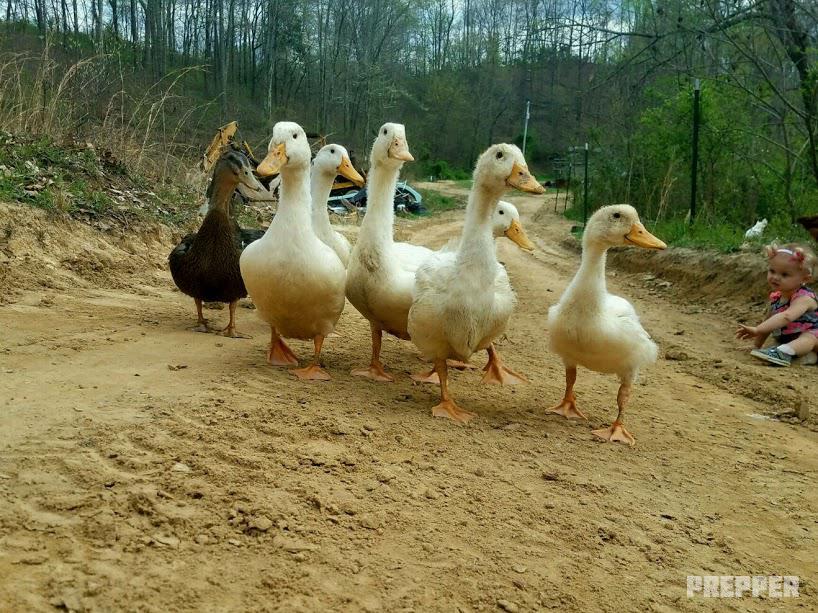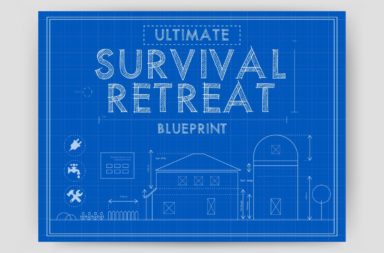Contrary to what some clickbait headlines may claim, there is no such thing as “free land for preppers.” But, some legit and potentially highly beneficial loan programs and grants do exist – and could help you make the dream of owning your own survival retreat a reality.
Government grants and loans that require only a low (or sometimes even no) down payment are available not only to purchase land, but to buy livestock, build barns, purchase agriculture vehicles, put in a well, engage in small-scale specialty farming, organic growing, and farm-to-table, are readily available. You simply have to know where to look and possess a minimum credit score and acceptable debt to income ratio.
While working actively as a real estate agent in a rural county, I found two consistent traits among buyers across the entire economic spectrum. The first being, folks simply did not have a grasp on whether or not they were “loan ready” and secondly, they had no idea how of a loan the bank would determine they could afford.
Before I delve into the types of loans that can help a prepper be able to purchase a survival retreat, or even a home on a large lot in the suburbs so they can small-scale homestead to become more self-reliant, loan readiness really must be addressed.
You will not get approved for a loan to create a secluded prepper retreat like this if your credit score is too low or your debt it too high.

Are You Loan Ready?
1. Minimum Credit Score
The minimum credit score either a bank or government loan program will accept fluctuates, but has hovered around 640 for several years. The “credit score” the bank will look at is an average of your score from the three primary credit reporting agencies: TransUnion, Experian, and Equifax.
2. Debt to Income
You can have a perfect credit score and great income and still be unceremoniously turned down for a loan because your debt to income (DTI) ratio is too high. If you are holding too much debt on credit cards or existing loans even if they are in good standing, you can have a DTI larger than the 40 to 45 percent maximum amount allowed by various government backed loan programs or bank loan packages.
3. Credit Card Usage
Keeping credit card balances at or below 25 percent of your allowable usage and paying at least the minimum amount due on time each month will increase your credit score.
4. Having No Debt Can Hurt You
Not having any debt will hurt you when applying for a loan. Far too many folks believe chopping up their credit cards, paying off their loans, and having no debt will make them ultra attractive to lenders. In fact, the opposite. Neither a credit agency nor a bank can determine your creditworthiness if they have no history to review and judge.
5. Student Loans Current
If you are past due on a student loan, no matter how recent or how old the debt is, you cannot be approved for any type of government loan.
6. Clear Negative Marks
There is almost always no need to pay for credit counselor to deal with negative marks on your credit. You can negotiate consolidations, reduced amounts if paid in full by a certain date, or find the contact information for a creditor on your credit report and clear the bill yourself.
7. Pay Off Debts In Full
It is almost always best to pay off a debt entirely and not have a notation next to the paid collections account that read “reduced payoff” or some similar phrasing. Such terminology will alert the bank that you not only paid off the bill in a tardy fashion, but negotiated less than a full settlement.
Many collections agencies do not “erase” the late payment from your credit history after payment. The bill will show up as paid, but the lender will see it went to collections before it was settled. A closed and paid account will increase your score a small amount and will not stop the approval process as will any unpaid debt.
8. Dispute Errors
If a debt is showing that you believe to be an error or is more than seven years old you can dispute the account without charge with all three credit bureaus – make sure to file a dispute with all three to have the mistake or bill that is too old to still count against you, from popping up again. During the dispute you will be prompted to upload and attach any supporting documents – do this, it will greatly increase the chances of correcting an error quickly.
9. Avoid Hard Credit Inquiries
You can look at your own credit score as much as you want without it negatively impacting your score. Checking your own score is a soft hit and does not count against you. When a lender or business (like a cell phone or cable provider) checks your score, that is a hard hit and will reduce your score. Do not go loan shopping, every single time a lender processes your application your score will take a hit.
10. Minimum Established Credit
Nearly all lenders require a credit history that is at least two years old and has had at least two open accounts, before an applicant’s loan request will be considered. A work history of at the very least two years without interruption, is also necessary. Child support, alimony, disability, or retirement payments can be considered income for loan approval purposes, but typically such payments must be at least 12 months old.
To help increase your score or establish a credit score for the first time, consider opening a reputable secured credit card or FingerHut Safe Start account. Follow the best practices for usage noted above and your score should improve the next reporting month and all following months when the credit is used wisely.
Loans And Grants For Preppers
United States Department of Agriculture
The USDA is one of the best sources for acquiring a low or no money down loan to purchase land. The federal agency offers both loans and grants year round. Some loans require a business or attempt at profit component to be eligible. A produce stand on your property, advertising the sale of eggs, horse stall rental, grapevine, hay, or firewood, can count as an agricultural business.
Some USDA loans are designed specifically for beginning farmers, minority, female, or veteran farmers. There are usually a minimum and maximum amount of acreage attached to each loan type – with the amount sometimes fluctuating annually. Some USDA loans may have an income maximum, but not all. Down payment assistance programs through the USDA can help borrowers pay nothing out of pocket when applying for the agency’s low interest up to 30-year loans.
Fannie Mae Home Ready
This is a unique type of loan that allows a higher than normal DTI and the inclusion of non-borrower income to be considered during the loan approval process. If only one person in the home has a solid credit and work history but another adult (be it a spouse, parent, adult child, or non-relative housemate) living in the home works and contributes to household expenses, a percentage of their income can be factored into the DTI to help qualify or increase the buying power of the applicant. Although the credit score of the non-borrower (you can use multiple on a single loan application) does not matter, the amount of debt being carried in their name does.
The Fannie Mae Home Ready loan is one of the few packages that permits non-traditional credit be factored into the approval process if the borrower has a “thin file” – meaning a short term credit history with few open accounts. Non-traditional credit would involve at least 12 months of on time payments for utilities, car insurance, cell phone, rental furniture, cable service, internet service, or even for babysitting if receipts can be produced to show payment throughout the minimum duration required. If the land or home being purchased is in a designated distressed area (The locations can change, with current locations searchable by address from the Fannie Mae website) there is no income maximum to take advantage of the very low money down (gifted funds and grants allowed for down payment) and low interest loan.
New manufactured homes are currently permitted under this program – you do not have to be a first time buyer to apply for this loan.
Rural Development
If you want to purchase a prepper retreat of 20 acres (current maximum, but that can change) or less, a Rural Development loan could be a viable low money down and low interest option. An income maximum and loan acreage maximum are often applied to these loans.
HUD Good Neighbor Next Door
This government loans offers low interest rates and low down payments to primarily first responders and teachers. There may be location specifications and acreage limits on this type of loan package. Typically, the Good Neighbor Next Door loan is offered only to applicants who are willing to purchase a property in a designated revitalization area – which can range from beautifully rural to inner city neighborhoods.
FHA/VA
These no money down loans often do not have an income limitation, but may have an acreage maximum. While these quality loans offer a great deal to applicants, the appraisal process can be problematic. Real estate appraisers must hold a specific type of certification to conduct a review of the property. Because the inspection is so tedious and nearly amounts to a full home inspection of all utilities and other technical components of the home, many appraisers shy away from becoming certified due to liability concerns.
It is not unusual in my rural region of the state, for it to take up to three months to secure an FHA or VA appraiser to come to the area to inspect a property. If the home is older, or in some cases, a fixer upper, or common for a small town or county style of home, expect there to be up to thousands of dollars in “repairs” needed before the property can pass inspection. If you have patience and can get the property to pass inspection, the loans are a great deal.
In Part 3 of the Ultimate Guide To Buying Survival Retreat Land you will learn about the many ways you can make either a part-time or full-time income working from your survival homesteading retreat, including grants that will help pave the way to make the process simpler and a whole lot cheaper.


